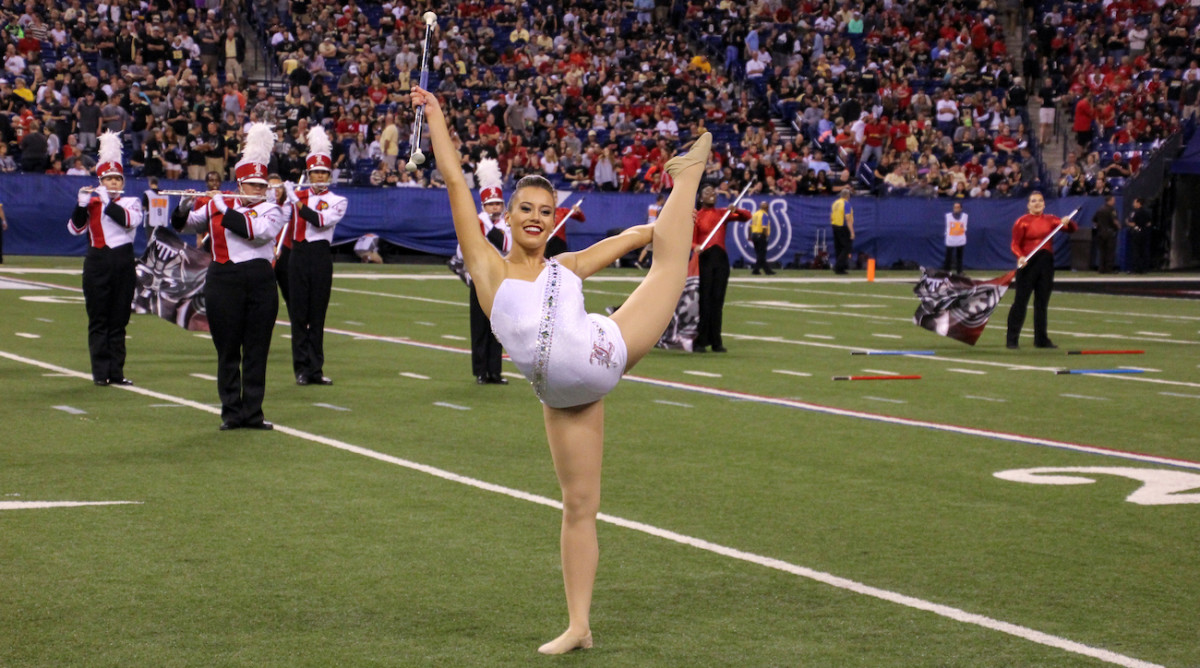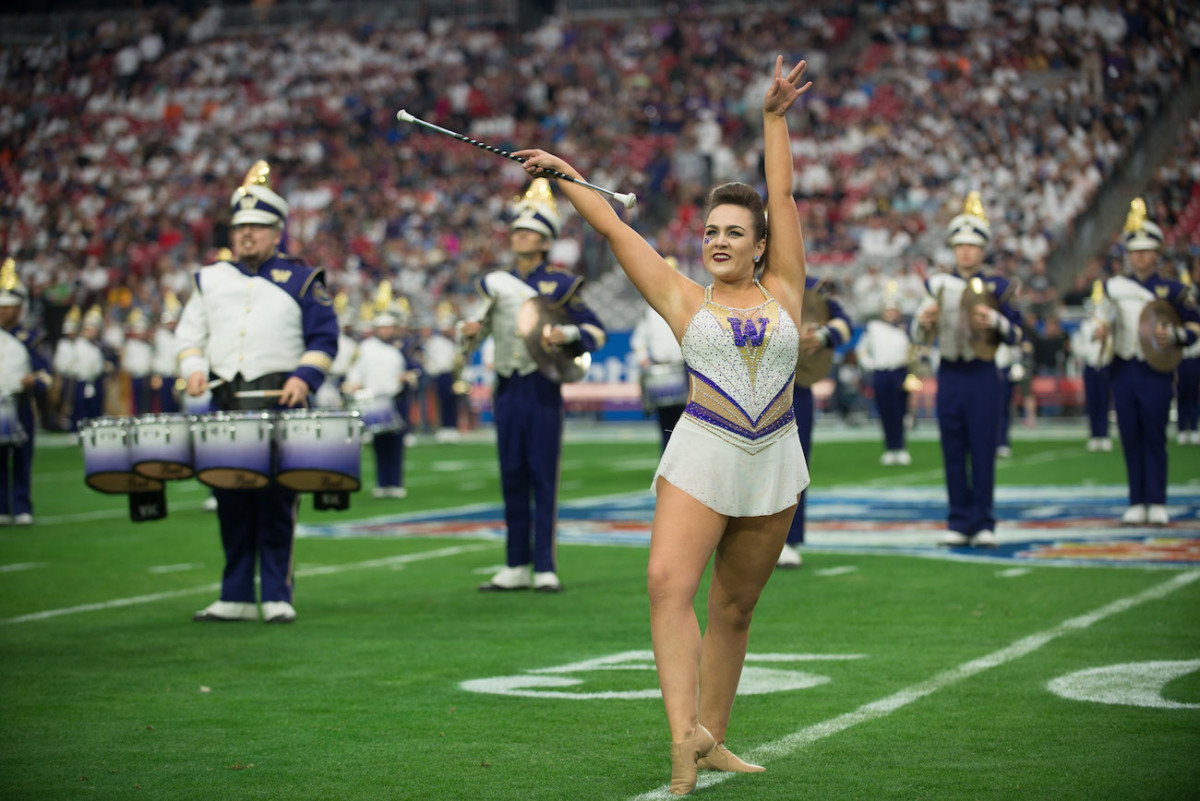Baton Twirlers Ready for the Fall Sports Season

When Adaline Bebo first stepped onto the football field at Baylor University with a baton in her hand, she felt a mixture of excitement and happiness.
“I had dreamed of twirling at my college for years and years, as long as I can remember,” she says. “I was finally getting ready to live my dream.”
This summer, collegiate athletes all over the country have been training in their sports, working hard to get that extra edge for the upcoming season. Baton twirlers like Bebo, one of around 500 U.S. collegiate baton twirlers, are no different.
During the school year she practices with her baton two to three hours a day. That number increases in the summer to up to five hours a day. She also lifts weights and does a lot of stretching.
“You have to make sure that your body is strong enough to support such a crazy schedule as mine,” she says.

Bebo started twirling at the age of nine in her hometown of Carmel, Indiana. She is now 21 and the captain of the four-twirler team at Baylor. As a college twirler, she performs at football games and other school events. Many of her routines are three minutes long, but halftime routines on the football field can last 10 minutes.
“That’s a lot of twirling,” she says. “When you get to college, I think the adrenaline kicks in and we just go.”
Steffany Lien is the twirler for the University of Louisville in Kentucky. She started twirling at age four in her home state of Nebraska. At first Lien twirled just for fun, but soon she started practicing each day to learn the skills needed to twirl at the college level. Twirling requires dance skills, being able to balance the baton, and gymnastics, she says.
“I love twirling because it combines multiple sports,” Lien says.
All that training has helped Lien, now 20, meet the challenge of entertaining the thousands of fans that fill the football stadium.
“For me it's about traveling across the field with leaps and acrobatic moves,” she says. “It's tiring to be doing an eight- to 12-minute halftime performance, but it's really about reaching all different sides of the football field to connect with the fans."
Being able to adjust a routine to fit the performance space and weather conditions is a must for college twirlers, she says.

“You have to be able to adapt to the space and the crowd,” Lien says. “Sometimes it's raining outside, sometimes it’s windy. You just have to go with it and make it work. That’s part of the fun.”
Both Bebo and Lien are among the twirlers that are sure to inspire kids to pick up a baton and start twirling.
One kid waiting for the chance to twirl at the college level is 10-year-old Allison Anderson from Lee Summit, Missouri. Anderson has been twirling since she was two. She practices about two hours a day in addition to taking dance lessons.
Anderson still remembers a performance that a baton twirler named Savannah Miller gave about four years ago at the Kansas City Juggling Performance Festival.
“It just showed people what you can really do in baton and how exciting it is,” Anderson says.
Miller now twirls for the University of Arkansas. Says Anderson, “I would like to follow in her footsteps.”
Another athlete hoping to twirl in college is 15-year old Bailey Walke from West Des Moines, Iowa. Walke is a sophomore and hopes that when high school ends, her twirling days aren’t over.
“That is my number one goal: to be a college twirler,” she says. “I would love to stay in Iowa, but I’m open to other places.”
Some colleges and universities no longer have a twirler, says Brad McDavid, director of athletic bands at the University of Washington.
“A lot of college bands have stopped having twirlers because the tradition has become not as popular,” McDavid says.

The Huskies don’t plan on dropping the baton, though.
“The twirler at the University of Washington is a really important part of our overall performance and adds a lot of additional color and pageantry,” he says.
The school, located in Seattle, even offers its twirler a scholarship equal to having in-state tuition paid. If the twirler is from outside of Washington state, that twirler would just have to pay the difference between in-state and out-of-state tuition.
There is only one feature twirler position available at UW, and between 20 to 30 twirlers apply. McDavid’s advice for applicants wishing to get an edge is to be excited about twirling at the school to which they are applying.
“We are not only looking for great twirling skills, but we are also looking for someone passionate and enthusiastic about being the twirler at the University of Washington who can project that in how they carry themselves and how they speak,” McDavid says.
This is the Huskies’ 82nd year of having a twirler, and he looks forward to seeing their performances for years to come.
“It’s a tradition that we’re really thrilled about,” says McDavid, “and we look forward to each new twirler that we bring in.”
For athletes like Lien, the opportunity to throw her baton for thousands of cheering fans is reward for years of training and hard work. As she puts it, “Nothing compares to the atmosphere of gamedays.”
Top photograph by Matthew Minard/Baylor University
